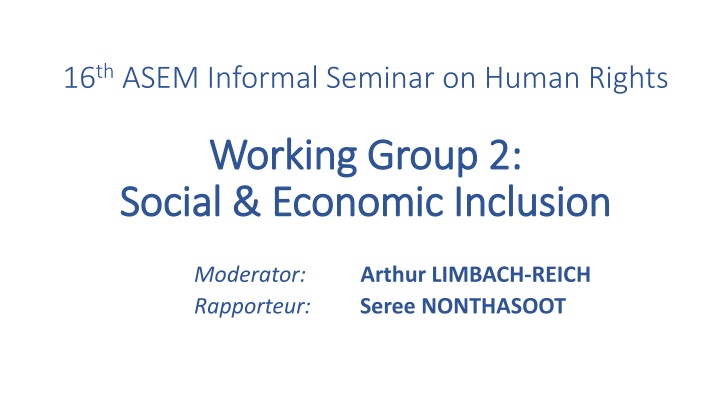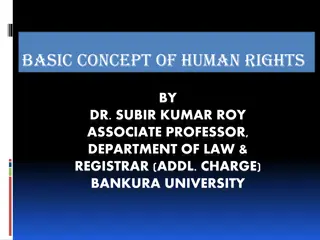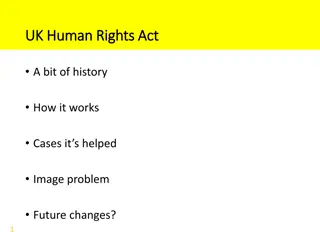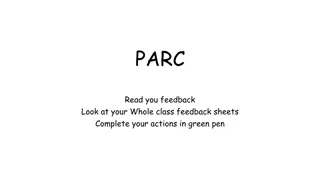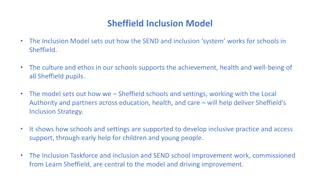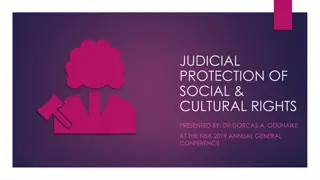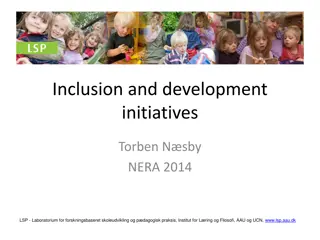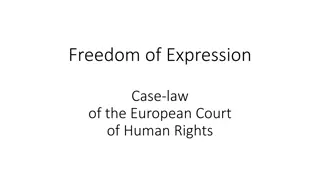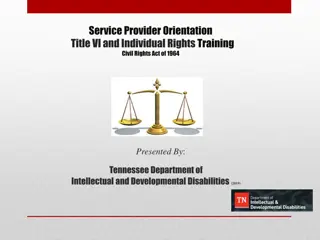Enhancing Social and Economic Inclusion through Human Rights Perspectives
The 16th ASEM Informal Seminar on Human Rights focused on issues of social and economic inclusion, particularly addressing the intersectionality of disabilities and gender perspectives, violence against women, education for women, and Sustainable Development Goals. Key topics included accessibility to social protection, good practices for private operators providing public services, and community-based interventions aimed at shifting from institutionalization to inclusivity through rehabilitation and training programs.
Download Presentation

Please find below an Image/Link to download the presentation.
The content on the website is provided AS IS for your information and personal use only. It may not be sold, licensed, or shared on other websites without obtaining consent from the author.If you encounter any issues during the download, it is possible that the publisher has removed the file from their server.
You are allowed to download the files provided on this website for personal or commercial use, subject to the condition that they are used lawfully. All files are the property of their respective owners.
The content on the website is provided AS IS for your information and personal use only. It may not be sold, licensed, or shared on other websites without obtaining consent from the author.
E N D
Presentation Transcript
16thASEM Informal Seminar on Human Rights Working Group 2: Working Group 2: Social & Economic Inclusion Social & Economic Inclusion Moderator: Arthur LIMBACH-REICH Rapporteur: Seree NONTHASOOT
Introduction and Crosscutting Issues Introduction and Crosscutting Issues Intersectionality (Disabilities & Gender Perspective/ Violence against Women/ Education for Women/ Sustainable Development Goals) Heterogeneity and classification of disabilities (neglect of some groups, esp those with mental illness) Definition Issue (Integration v Inclusion reasonable accommodation an indispensable component, the goal of inclusion: effective & meaningful participation in public life) Diversity of stakeholders/ providers (States, CSOs/DPOs, Private Operators) Attitudinal Challenge stigma and barriers 2
1. Accessibility to Social Protection 1. Accessibility to Social Protection Gains from compliance with CRPD (Provision of services some specific to PWDs like healthcare and education). Shift of emphasis to rights-based approach Respect for rights, individualization of services (case management), measurement of quality, new form of service funding (from recipient to buyer), provision of personal assistance. Challenges include: Sustainability of the programme; Lack of comprehensive & reliable database; Lack of bridge between education and employment; Communications also a challenge to social service access for specific groups (blind & deaf) 3
2. Good Practices on Private Operators on Public Services 2. Good Practices on Private Operators on Public Services States as duty bearers to provide and ensure equality and quality of services. In a centralized system, greater transparency through publication of data and assessment of services can serve as benchmark for different public service providers especially at municipal level. Where services are outsourced or delegated to private operators (CSO/DPOs or PPP), a legislation or clear set of key performance indicators must be put in place to ensure equality and quality of those services. Accreditation of services can also be instituted. Requirement of disability training for personnel of private firms 4
3. Community 3. Community- -Based Interventions Based Interventions A shift from institutionalization to community-based intervention, including community-based rehabilitation. Community-based intervention can help provide integration and inclusivity for people with mental health conditions. Lack of information on prevalence of mental illness among men & women. Training of parents is instrumental, esp in the case of children with cerebral palsy 5
4. Information Access 4. Information Access ICT infrastructure is a new area toward which mainstreaming efforts must be directed Information & communication as key to access social services, especially for blind & deaf persons Information about services must be provided not just to service professionals, but also to persons with disabilities themselves Goal of inclusion Different needs of different groups must be met 6
5. Labour Market Participation 5. Labour Market Participation Sheltered employment & procurement regulation (Observance of non- discrimination) Positive discrimination measure: Quota. Dichotomy of expectations of workability of Persons with Disabilities (parents with low expectation v employers with mainstream expectation) Social protection must serve as a bridge between education & employment (an example of integrated services to provide whole-of-life social protection) A new model of CSOs/DPOs in employment service: Personalised Social Support Put the person at the centre and give support fitting the profile Digital economy offering windows of opportunities 7
6. Inclusive Healthcare 6. Inclusive Healthcare Prevailing assumption that PWDs have no sexual need & the revolutionary recognition by CRPD that PWDs as rights-holders to sexual and reproductive matters and decision-making Fear factor: PWDs not able to function as good parents the need for State and service providers to give information about safe sex and reproductive health. Decision rests with PWDs Example of government providing anonymous counseling services on sexual and reproductive health to PWDs 8
7. Access to Adult and Non 7. Access to Adult and Non- -Formal Education Formal Education Rights to Inclusive Education (General Comment No. 4) Inclusive v special education: State s duty to provide both, but who has the right to choose (PWD/ parents/ the State)? Both systems can co-exist in same space, sharing facilities. Challenges in education system: tension between parents & teachers, physical barriers, lack of socialization with mainstream students, job matching Effectiveness of special education in doubt: some institutions function as storage Many good examples of education exist and the know-how must be shared (eg Zero Project Foundation) 9
Way Forward Way Forward Legislation and effective implementation are key to ensure equality and quality of social services and inclusion of persons with disabilities Further commitment can provide enhanced accessibility (ratification of Marrakech Treaty) Information access Incorporation of accessibility in the design process Measurement and monitoring of accessibility Participation NOTHING ABOUT US WITHOUT US! 10
